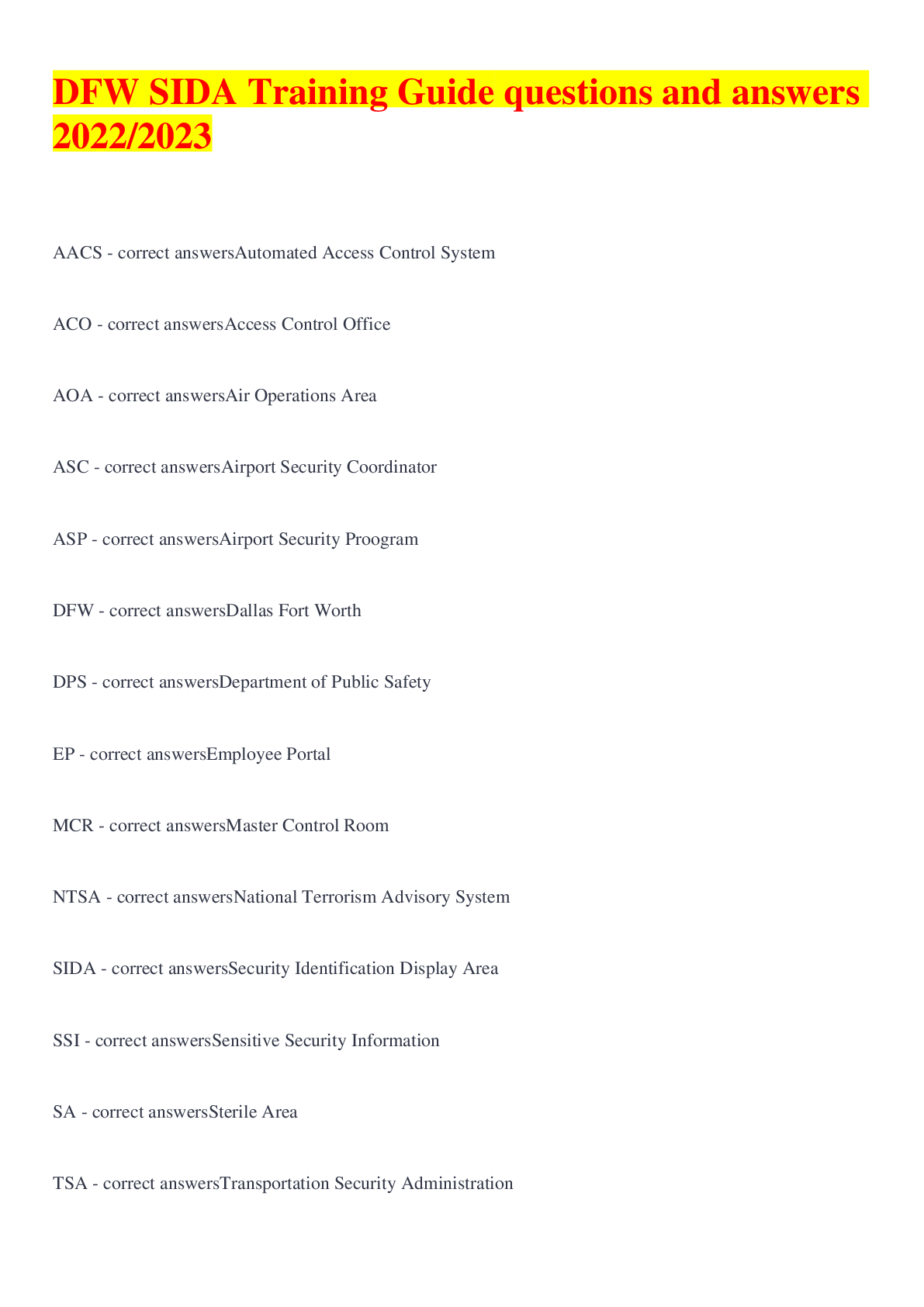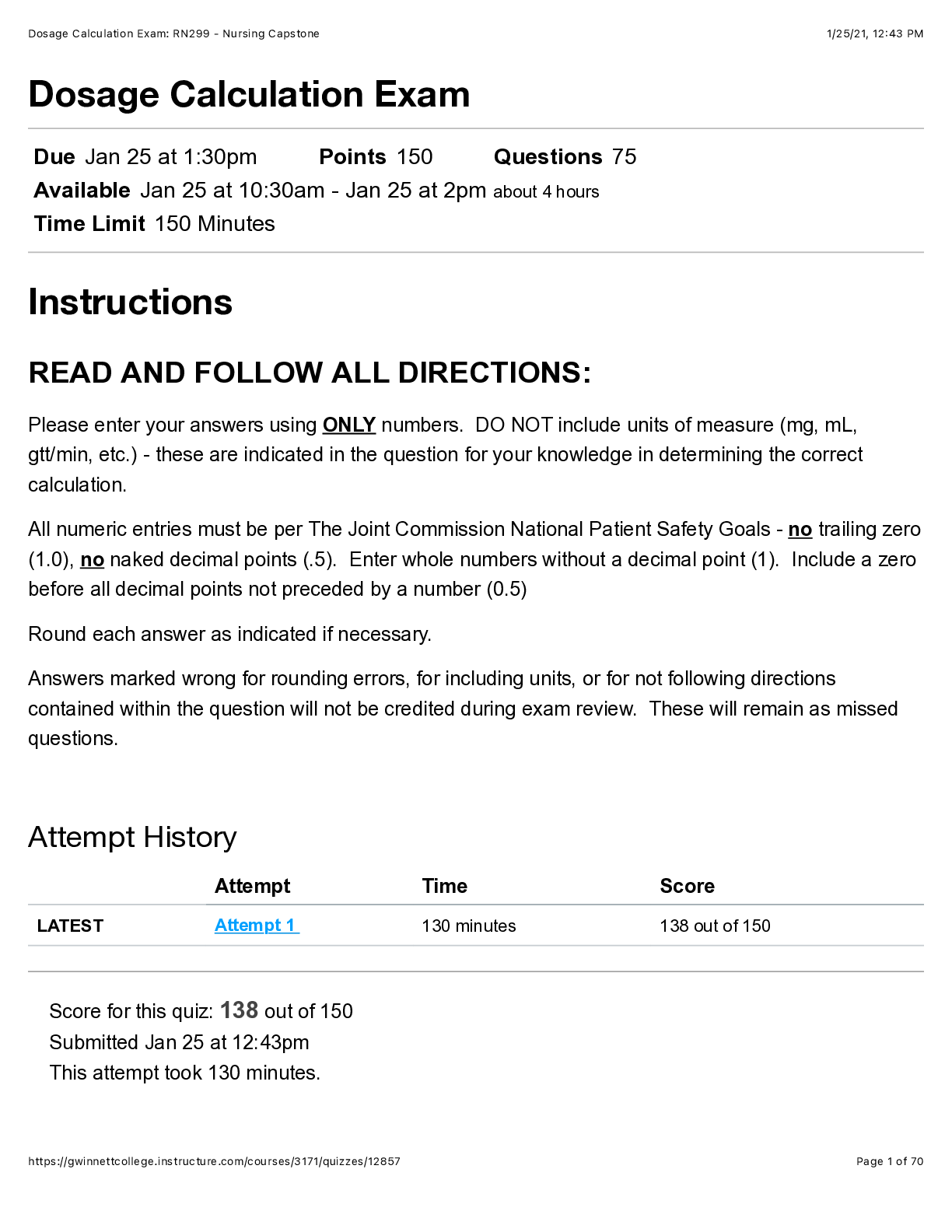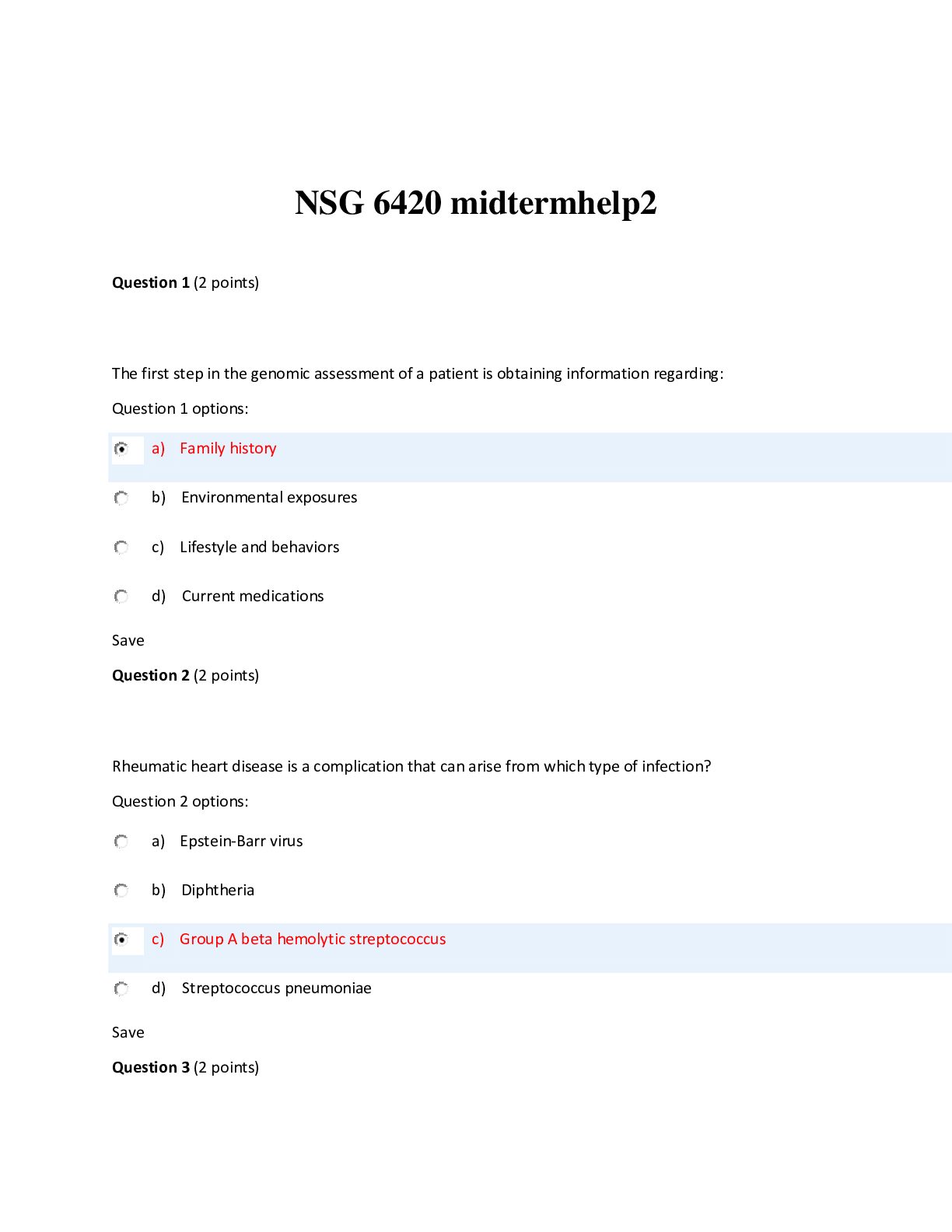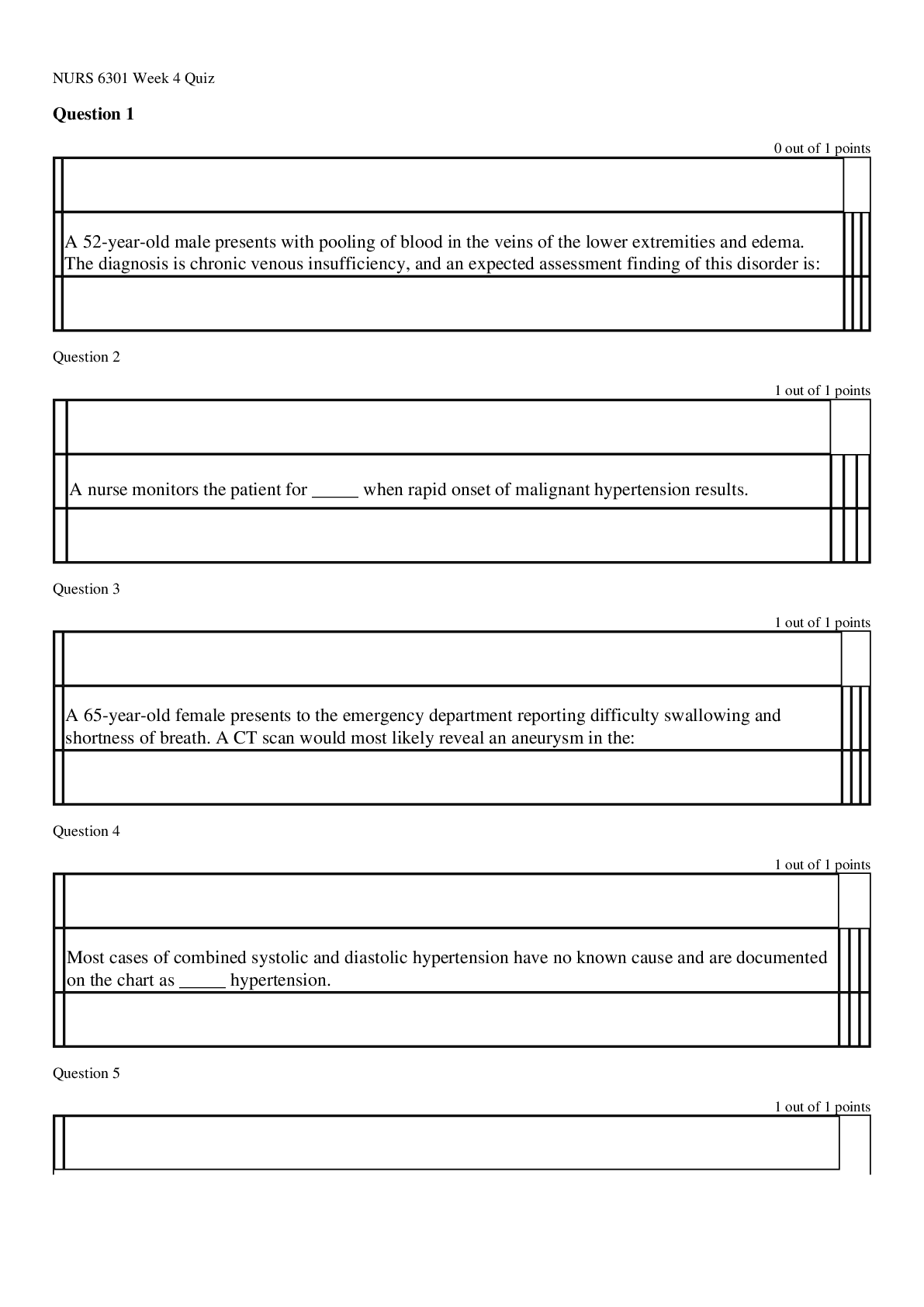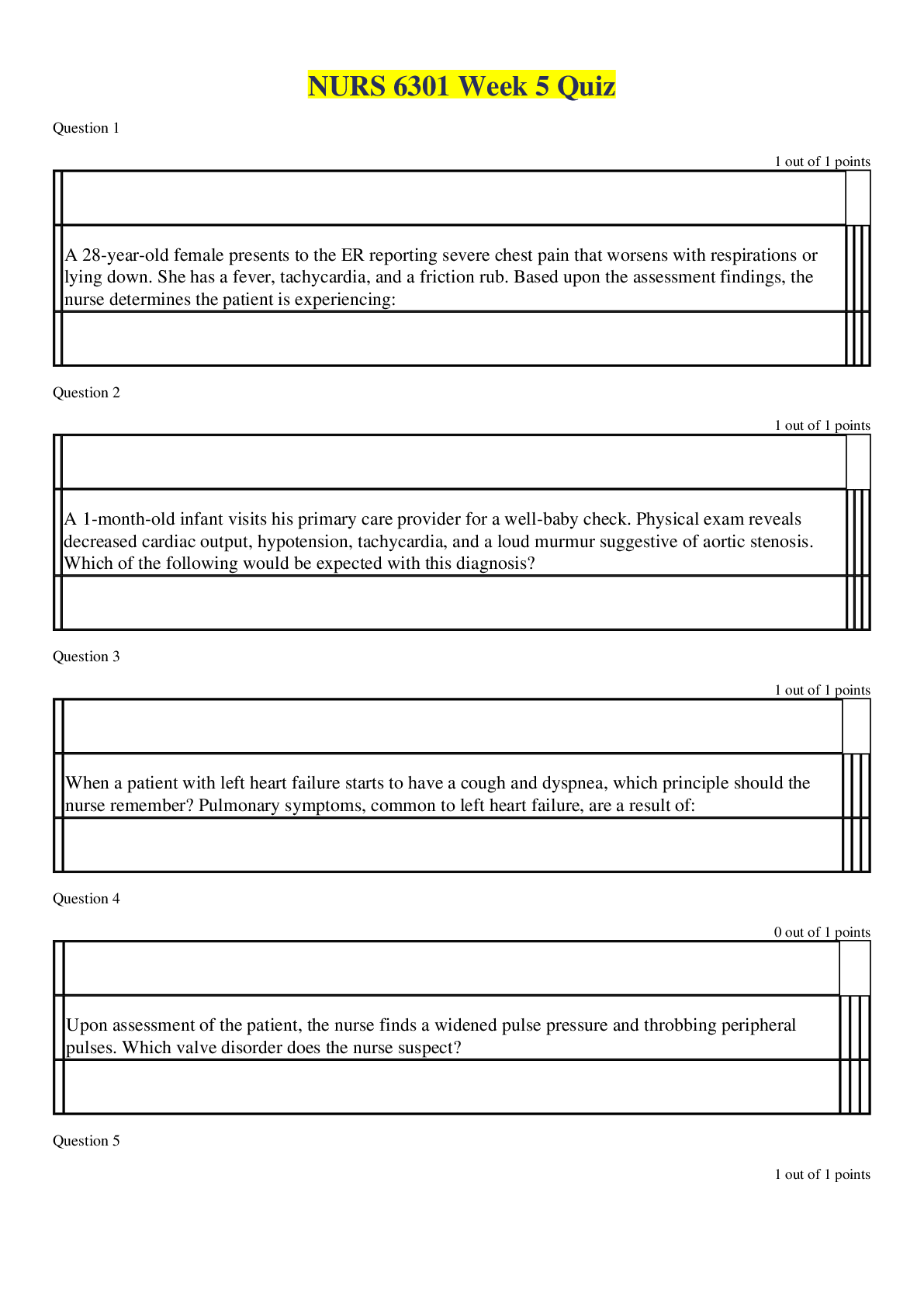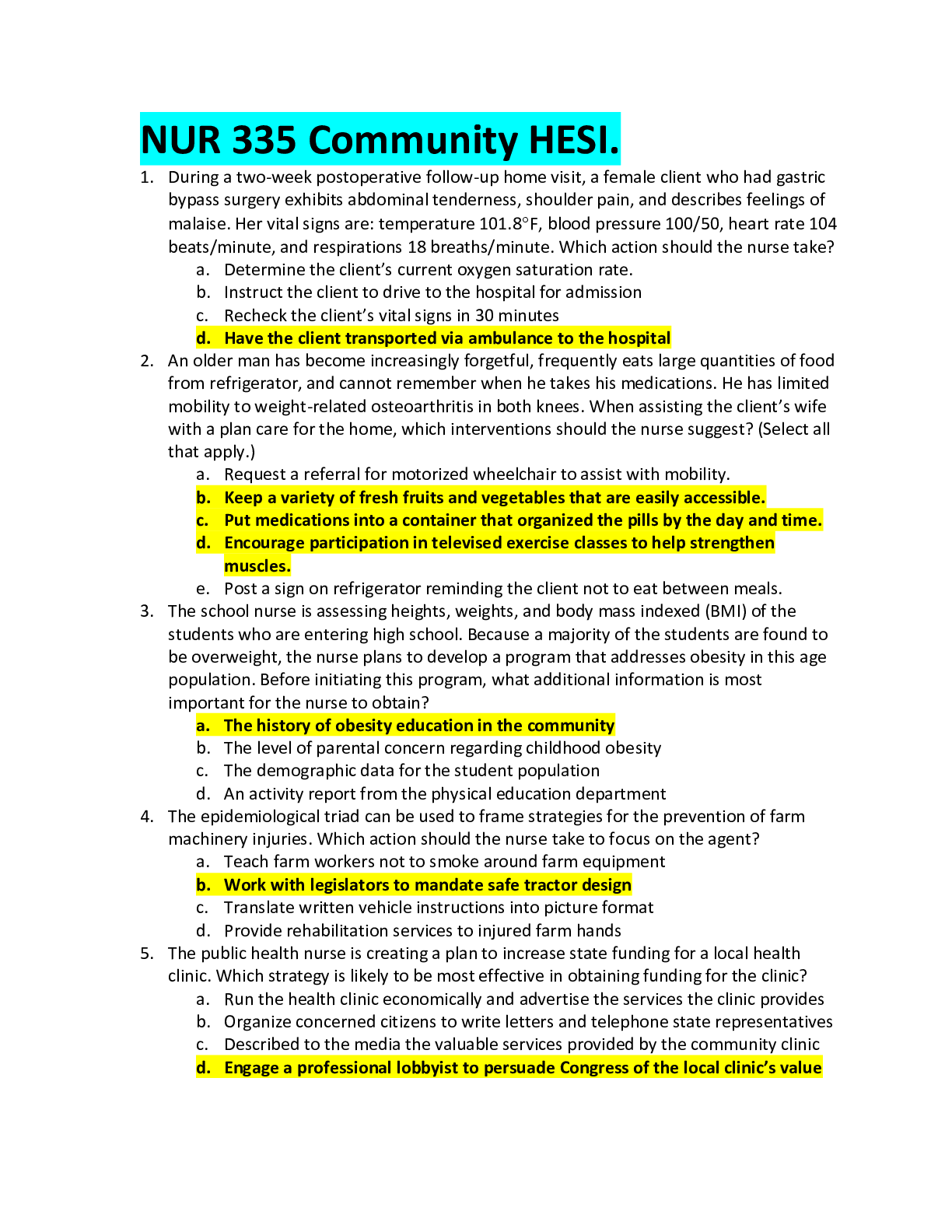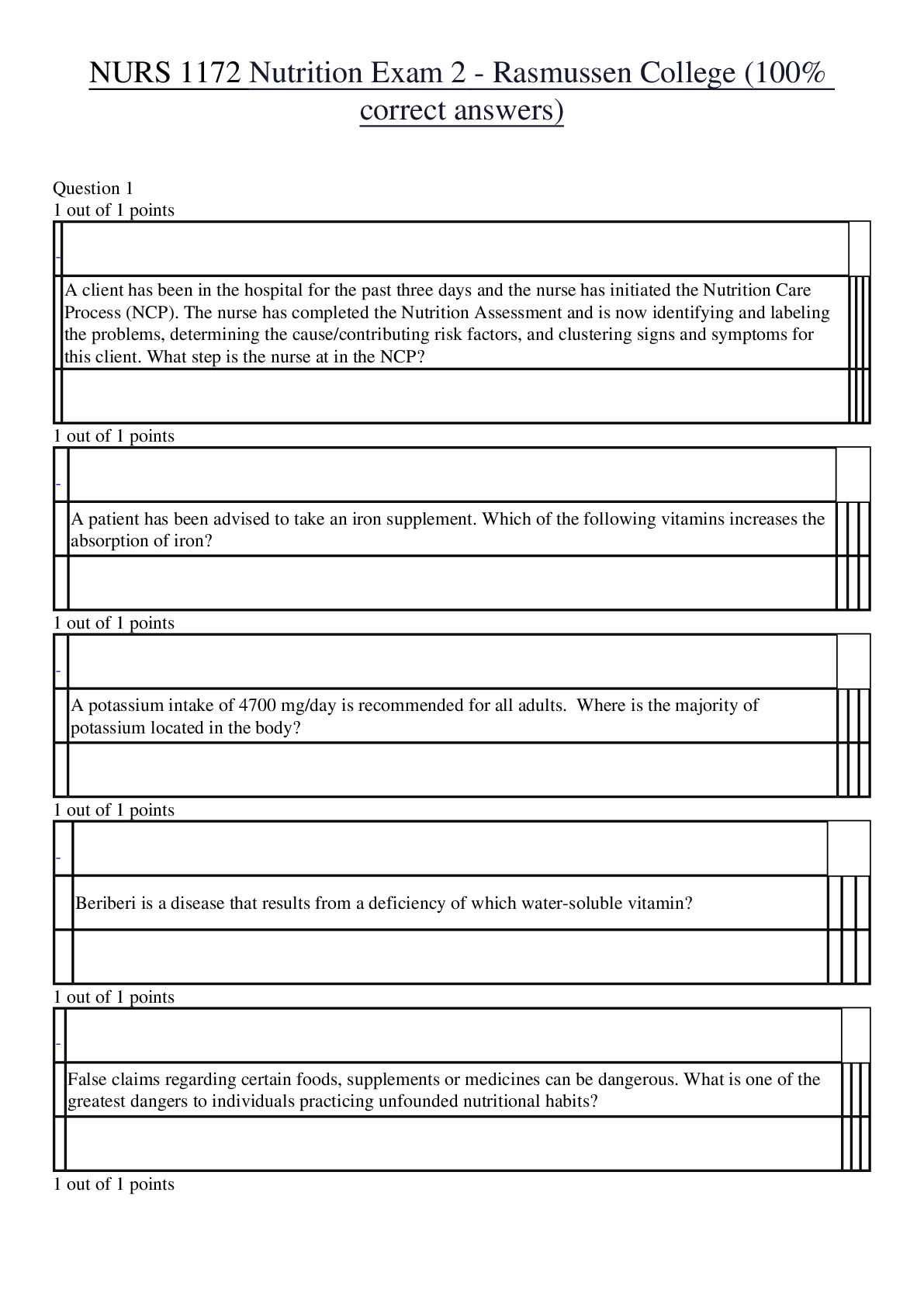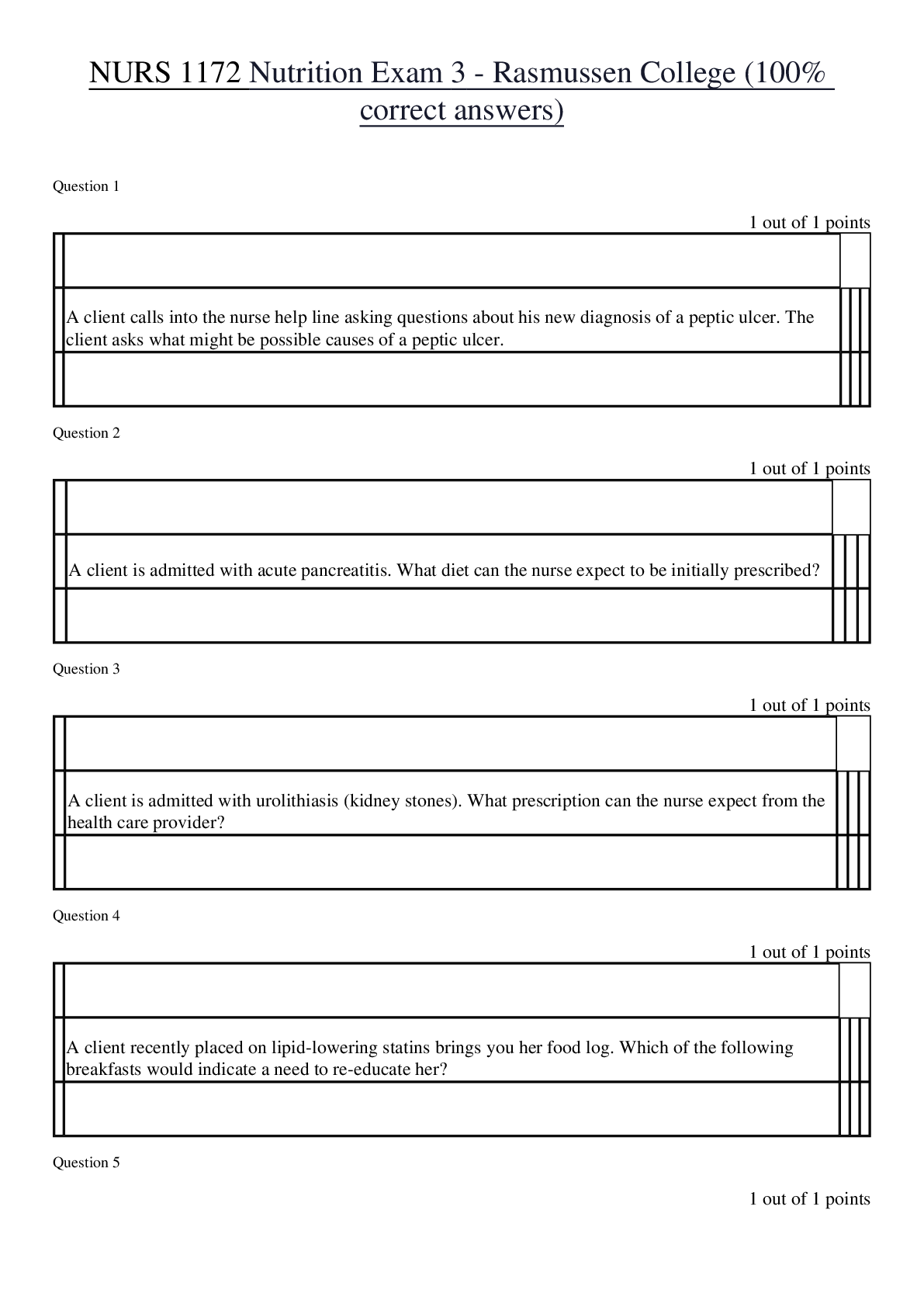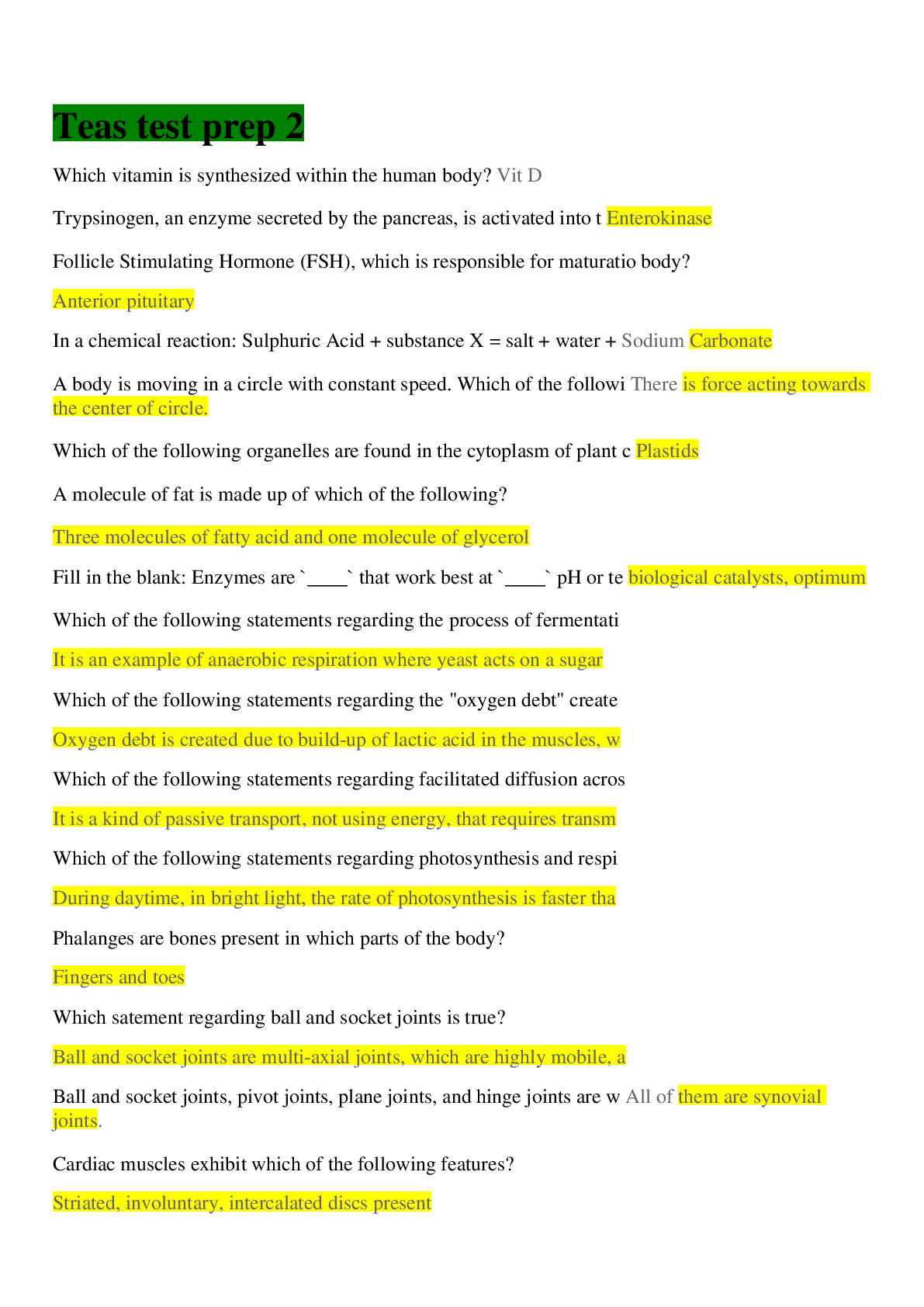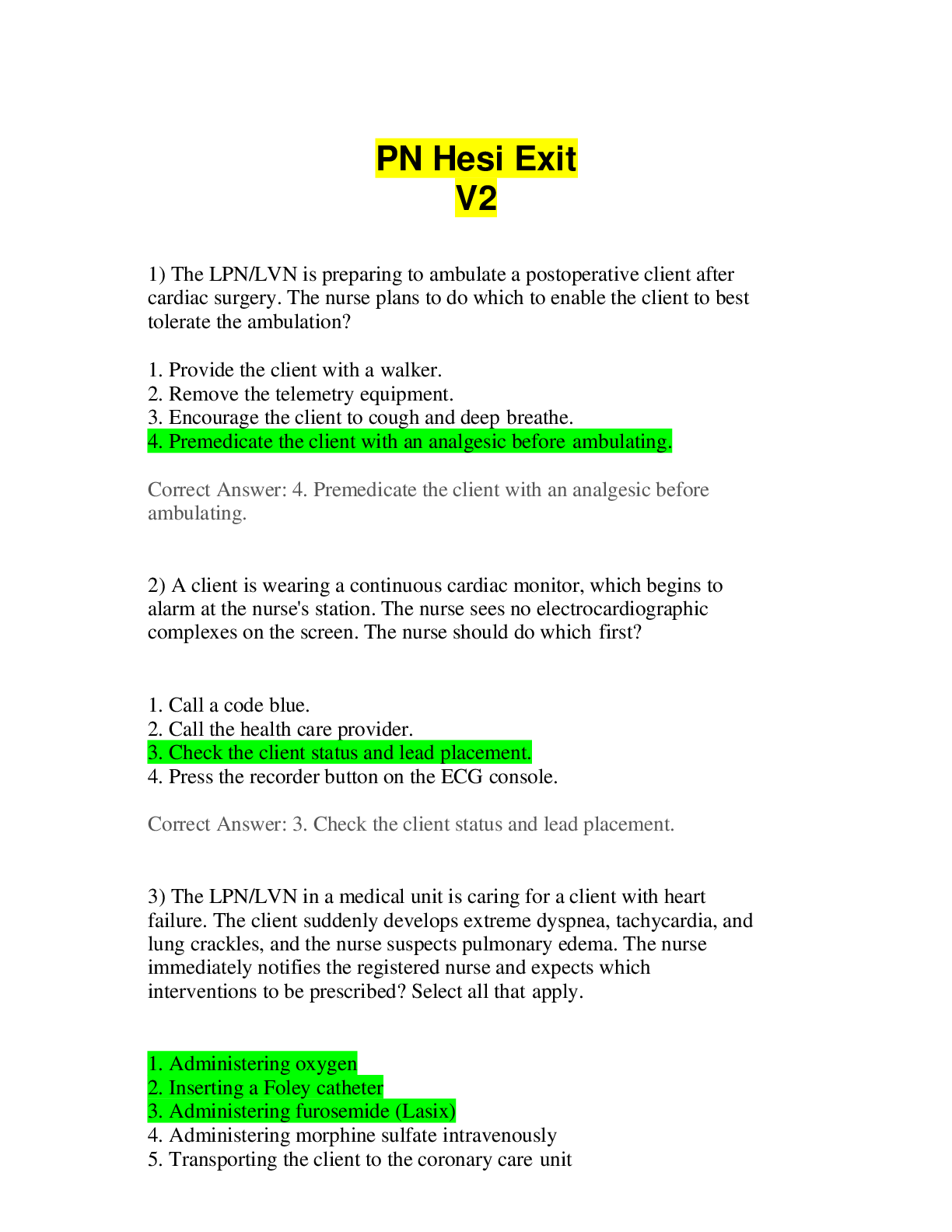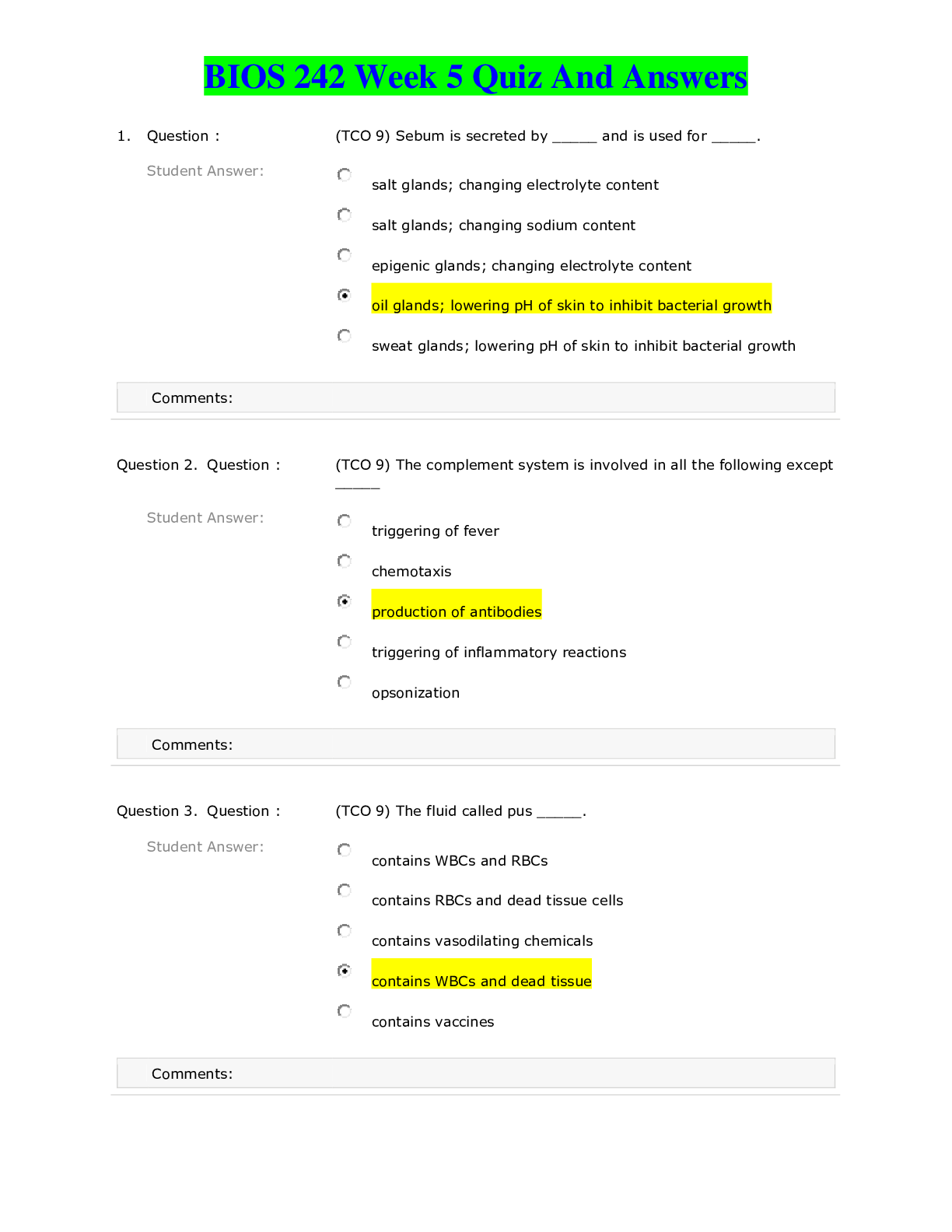ACLS Exam Version A | 50 questions with 100% correct answers | 11 pages
Document Content and Description Below
A monitored patient in the ICU developed a sudden onset of narrow-complex tachycardia at a rate of 220/min. The patient’s blood pressure is 128/58 mm Hg, the PETCO2 is 38 mm Hg, and the pulse oxim... etry reading is 98%. There is vascular access at the left internal jugular vein, and the patient has not been given any vasoactive drugs. A 12-lead ECG confirms a supraventricular tachycardia with no evidence of ischemia or infarction. The heart rate has not responded to vagal maneuvers. What is the next recommended intervention? A. Adenosine 6 mg IV push B. Amiodarone 300 mg IV push C. Synchronized cardioversion at 50 J D. Synchronized cardioversion at 200 J 30. You are receiving a radio report from an EMS team en route with a patient who may be having an acute stroke. The hospital CT scanner is not working at this time. What should you do in this situation? A. Contact the patient’s family to see what they would prefer. B. Have the EMS crew choose an appropriate patient disposition. C. Accept the report and provide care within your present capability. D. Divert the patient to a hospital 15 minutes away with CT capabilities. 31. Choose an appropriate indication to stop or withhold resuscitative efforts. A. Arrest not witnessed B. Evidence of rigor mortis C. Patient age greater than 85 years D. No return of spontaneous circulation after 10 minutes of CPR 32. A 49-year-old woman arrives in the emergency department with persistent epigastric pain. She had been taking oral antacids for the past 6 hours because she thought she had heartburn. The initial blood pressure is 118/72 mm Hg, the heart rate is 92/min and regular, the nonlabored respiratory rate is 14 breaths/min, and the pulse oximetry reading is 96%. Which is the most appropriate intervention to perform next? A. Administer oxygen. B. Obtain a 12-lead ECG. C. Evaluate for fibrinolytic eligibility. D. Administer sublingual nitroglycerin. 33. A patient in respiratory failure becomes apneic but continues to have a strong pulse. The heart rate is dropping rapidly and now shows a sinus bradycardia at a rate of 30/min. What intervention has the highest priority? A. Atropine IV push B. Epinephrine IV infusion C. Application of a transcutaneous pacemaker D. Simple airway maneuvers and assisted ventilation 34. What is the appropriate procedure for endotracheal tube suctioning after the appropriate catheter is selected? A. Suction during insertion but for no longer than 30 seconds. B. Suction the mouth and nose for no longer than 30 seconds. C. Suction during withdrawal but for no longer than 10 seconds. D. Hyperventilate before catheter insertion, and then suction during withdrawal. [Show More]
Last updated: 2 years ago
Preview 1 out of 11 pages

Buy this document to get the full access instantly
Instant Download Access after purchase
Buy NowInstant download
We Accept:

Reviews( 0 )
$10.00
Can't find what you want? Try our AI powered Search
Document information
Connected school, study & course
About the document
Uploaded On
Aug 26, 2022
Number of pages
11
Written in
Additional information
This document has been written for:
Uploaded
Aug 26, 2022
Downloads
0
Views
221


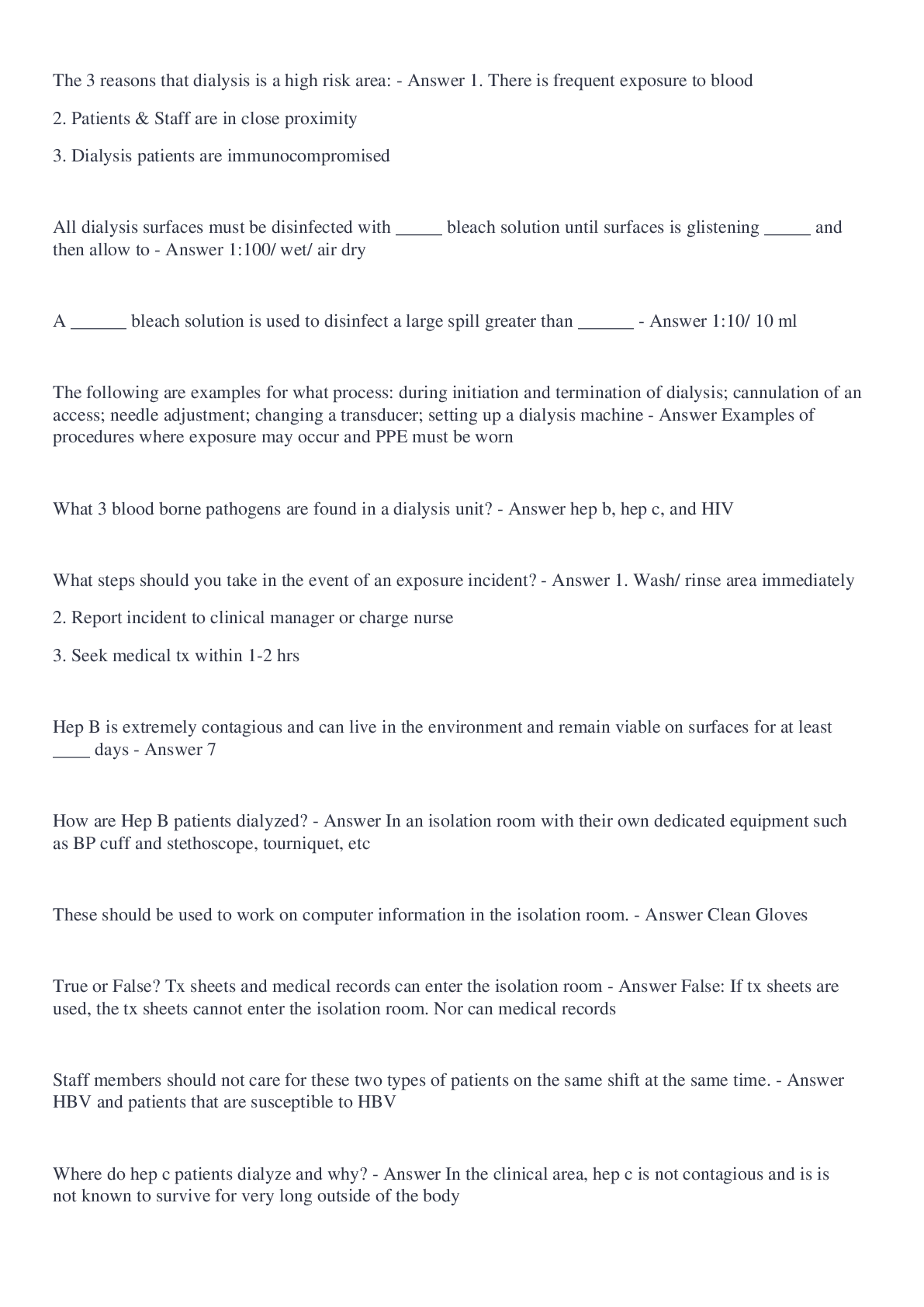
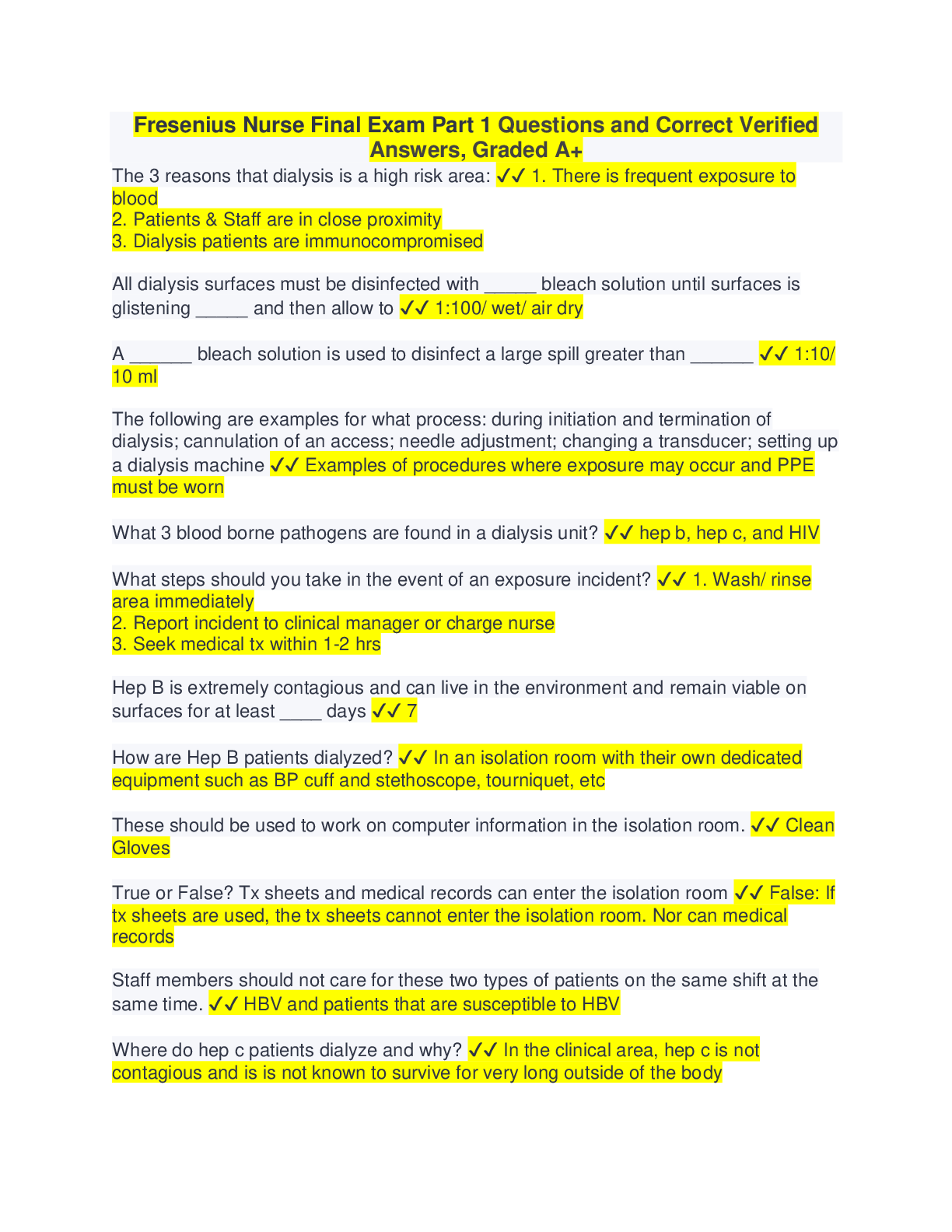
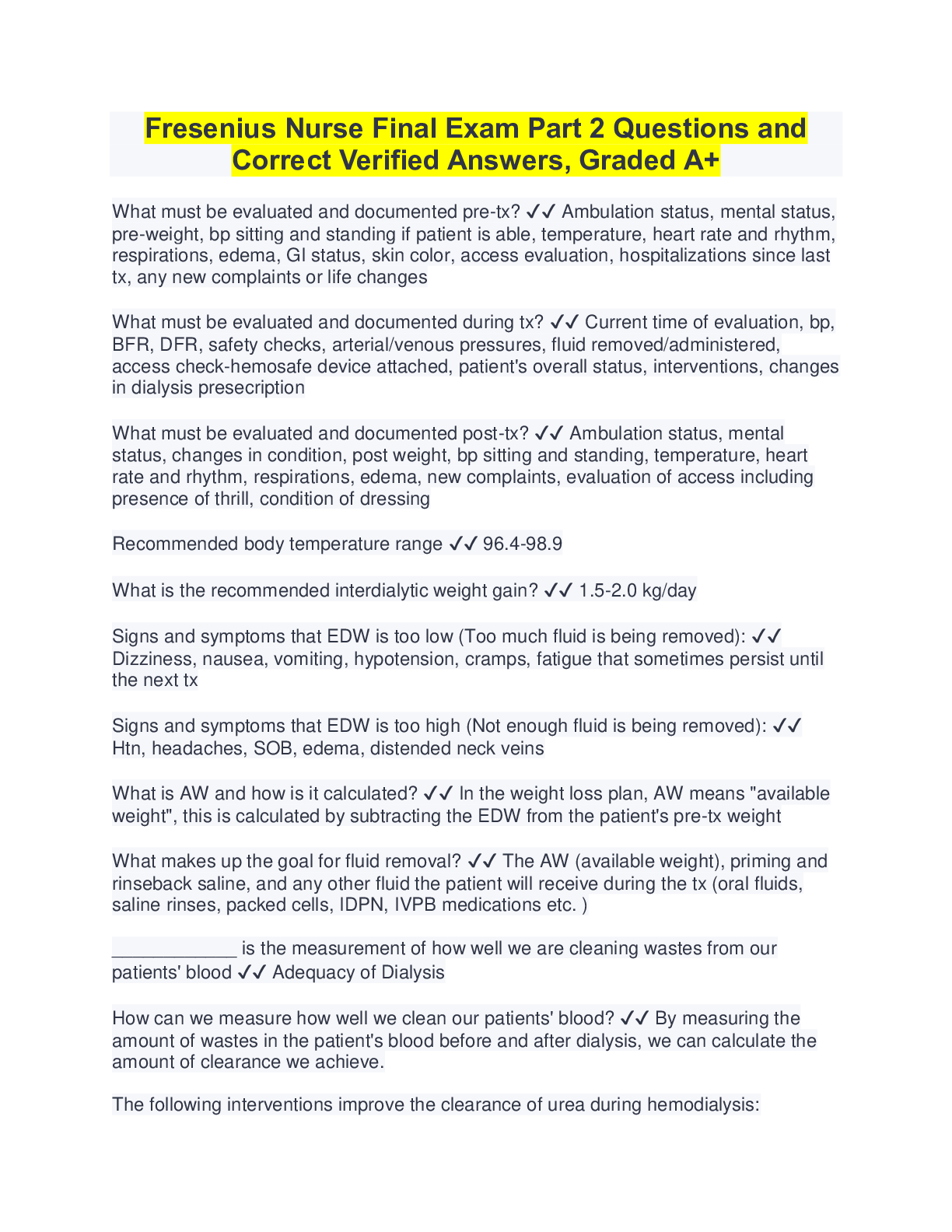
.png)



